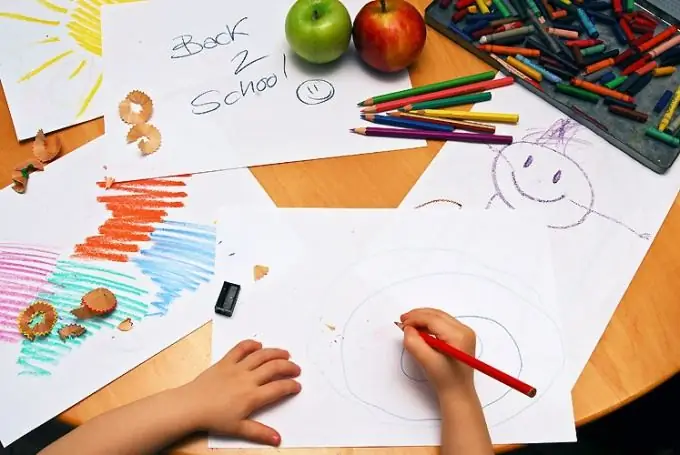A person is one of the most interesting objects for drawing, so a novice artist will certainly need to learn how to portray him. It is worth starting work by studying the standard proportions. Using this knowledge, you can believably depict any person, regardless of the characteristics of his figure and face.

Instructions
Step 1
Explore the theoretical background of the question. There are standard proportions of the human body, which vary depending on the figure of a particular person. To construct a standard human body, draw a vertical axis. Divide it into 8 equal segments. In the first segment from above, draw a head, mark it in the form of an oval, and then expand the upper half of the skull.
Step 2
Measure 4 more lines down - at this level is the person's groin. If you climb a third of the distance higher, you will find the level of the location of the fingertips. Consider the fact that even in a relaxed state, the human hand is slightly bent.
Step 3
From the bottom of the vertical axis, go up two lines and mark the location of the knees. Having determined the proportional ratio of all parts of the body, you can more clearly work out their shape.
Step 4
To learn how to draw a shape in different poses, try modifying a sketch that contains only lines. Bend and unbend the body parts to maintain their original size.
Step 5
When drawing bent body parts, you need to take into account the peculiarities of the work of various muscles. A minimal knowledge of anatomy will come in handy if you want to draw people perfectly correctly.
Step 6
After the outlines of the figure are built, you will need to give the object volume. For this, it is worth taking into account the peculiarities of the distribution of light on surfaces that are different in shape and texture. You also need to study the features of the material you are working with. For example, to achieve a natural skin tone in a drawing, watercolors, pastels and oils must be mixed and applied in different ways.
Step 7
The perception of the drawing will be influenced not only by how the body is drawn, but also by the image of clothing. Carefully work out all draperies, taking into account the shape of the body under the fabric and the softness or stiffness of the fabric itself - then the image will be realistic.






